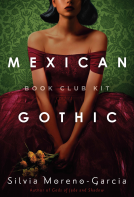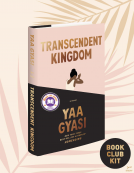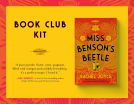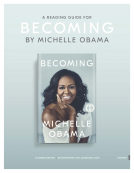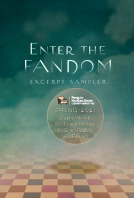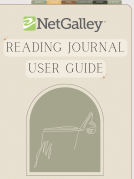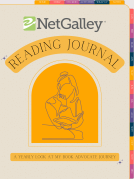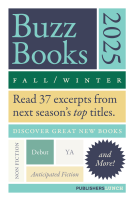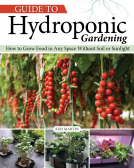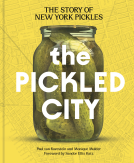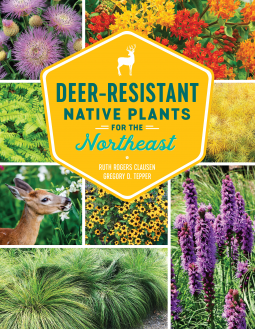
Deer-Resistant Native Plants for the Northeast
by Ruth Rogers Clausen; Gregory D Tepper
This title was previously available on NetGalley and is now archived.
Send NetGalley books directly to your Kindle or Kindle app
1
To read on a Kindle or Kindle app, please add kindle@netgalley.com as an approved email address to receive files in your Amazon account. Click here for step-by-step instructions.
2
Also find your Kindle email address within your Amazon account, and enter it here.
Pub Date Feb 16 2021 | Archive Date May 16 2021
Talking about this book? Use #DeerResistantNativePlantsfortheNortheast #NetGalley. More hashtag tips!
Description
The benefits of native plants are plentiful—less upkeep, more pollinators, and a better environment. In Deer-Resistant Native Plants for the Northeast, Ruth Rogers Clausen and Gregory D. Tepper provide a list of native plants that have one more benefit—they are proven to help prevent your garden from becoming a deer buffet. From annuals and perennials to grasses and shrubs, every suggested plant includes a deer-resistance rating, growing advice, companion species, and the beneficial wildlife the plant does attract. Let these beautiful natives help your landscape flourish!
For gardeners in Connecticut, Delaware, Maine, Maryland, Massachusetts, New Hampshire, New Jersey, New York, North Carolina, Pennsylvania, Rhode Island, Vermont, Virginia, West Virginia, and Washington, DC.
Advance Praise
“For gardeners looking to create natural spaces that will serve as lasting havens for pollinators and birds, this practical guide will prove the ticket.” —Publishers Weekly
“For gardeners looking to create natural spaces that will serve as lasting havens for pollinators and birds, this practical guide will prove the ticket.” —Publishers Weekly
Available Editions
| EDITION | Other Format |
| ISBN | 9781604699869 |
| PRICE | $22.99 (USD) |
| PAGES | 208 |
Average rating from 12 members
Featured Reviews
 Media/Journalist 16509
Media/Journalist 16509
This is a good roundup of native plants that deer tend to avoid. The authors point out that deer will eat anything if they're hungry enough so it's not foolproof, but these are plants that tend to be spiky, hairy, powerfully scented, toxic, etc. There are photos of each plant and a long description. The top tells its common name and then Latin name, zone and dimensions.
I wish the top also provided more information like when it blooms, what it's good for, etc. That info is in the description, but you have to read many paragraphs and flesh it out, when I prefer to just skim them and see this plant says it's easy to grow, drought tolerant, has a long bloom time, whatever. There is generally one photo per plant (a rather large one) but I often found myself wishing they had more because the photo didn't show me how it looked from a distance or other information to tell much about it.
I also really wish the authors had talked more about what to do to help deer or help the deer overpopulation problem. It was ironic because they often mention that plants were good for birds or butterflies or other parts of nature that rely on us to survive these days, but deer were just depicted as nothing but nuisances. They're in this predicament because of us and even one page of thoughts about how to help both deer and gardeners both would have been a really good addition.
A lot of the plants just look like weeds (and are plants that many gardeners literally consider weeds), although that's not a detraction for me. If you like a garden that looks like a Home Depot ad, you're not going to get that kind of selection here. Luckily, we're moving away from that kind of garden anyway. These are plants that help wildlife, are easy to care for, and will probably be mostly left alone by deer.
I read a temporary digital ARC of this book for review.
 Dubi S, Reviewer
Dubi S, Reviewer
I've been grappling for years with deer eating my landscaping at my house in Northeast PA. I have a multi-volume series of books on gardening and landscaping that did not provide easy answers -- those books were not organized such that deer-resistant plants were all in one place (actually, I don't think they deal with the issue at all).
There are web sites on the subject, but trying to use them while shopping for plants is less than optimal. Most stores I frequent -- certainly Lowes and Home Depot garden centers -- highlight deer resistance on their labeling, but that's a lot of work to go through their available inventory picking out deer resistant plants and then trying to sort out other issues like light, soil, and price.
So this book is a godsend. Broken down into five sections -- annuals, perennials, grasses, sedges, and shrubs -- with beautiful photographs of each plant, along with the level of deer resistance, planting guidelines that include soil and light conditions, compatible plants, and tips and tricks that I find very useful.
So what I will be doing for the next planting season is using this book as a resource to line up the right deer-resistant plants for my soil and various light conditions -- different kinds of plants (flowering, grass, shrubbery) as needed in different areas -- with back-up plans depending on what's actually available at my local nurseries.
If you live in this part of the country and want to avoid having deer eat your garden, this book is for you. Now, if we can somehow get rabbit-resistant plants into the mix, that would be great, although I suspect rabbits will eat anything.
 Zoe K, Librarian
Zoe K, Librarian
Gardening can be tough when your four legged neighbors stop by for a meal. This instructional book offers native plants that will have a better chance surviving when deer drop by. I love how they break the text into the different categories so that you can really plan and have a clear break down of all types of plants (shrubs, flowers, annuals, etc).
 Sandy G, Reviewer
Sandy G, Reviewer
This is well laid out with plenty of photos. I found the companion planting guides useful as well as the section on which plants attract deer. I’d recommend this book for anyone who’s either looking to incorporate more native plants into their landscape, or who has a deer problem. We’ve planted a number of the plants in this book in the past couple of years and it has lessened the amount of deer damage we have to deal with
 Kaye T, Reviewer
Kaye T, Reviewer
A good selection of plants that deer would avoid, although the author could expand on garden design and purpose of the plants. Also, a key point that stood out in the beginning was that having a dog is one of the best deterrents. The smell and sound of a dog keeps the deer out of the garden. If that’s the case, don’t see the need to worry about the plants. I like the idea, but kinda lazy to put so much thought into it. Might change my mind if I was having trouble of deer destroying trees, shrubs and garden.
 Tara C, Librarian
Tara C, Librarian
Ruth Rogers Clausen is a respected legend in the gardening world. Her books are all knowledgeable and Deer-Resistant Native Plants for the Northeast is a strong offering for both experienced gardeners and novices looking to get their feet wet and their fingers dirty. The organization of the book is impeccable, with all of the relevant planting details included. Sunlight, blooming time, soil type, and which plants play nicely with each other help to establish a well-planned garden. This is a book that should be in every public library throughout the Northeast as it is nearly impossible to care for plants in this part of the world without catering to the deer who stop by to pick and choose from the herbaceous offerings. The one downfall of the publication is the images - some pictures are great to showcase the bloom, but the full perspective of the plant or the in-context shot showing it within a garden is lacking. But the content and layout, informative sidebars and planting tips make up for this. This book feels like a great gift for new homeowners with a pair of gardening gloves and a set of pruners.
Readers who liked this book also liked:
Silvia Moreno-Garcia
Historical Fiction, Literary Fiction, Sci Fi & Fantasy
Rachel Joyce
Historical Fiction, Literary Fiction, Women's Fiction
Publishers Lunch
General Fiction (Adult), Nonfiction (Adult), Teens & YA
Brian Soonho Yoon
Children's Nonfiction, Crafts & Hobbies
Sam Morrison
Children's Nonfiction, Crafts & Hobbies, Outdoors & Nature
